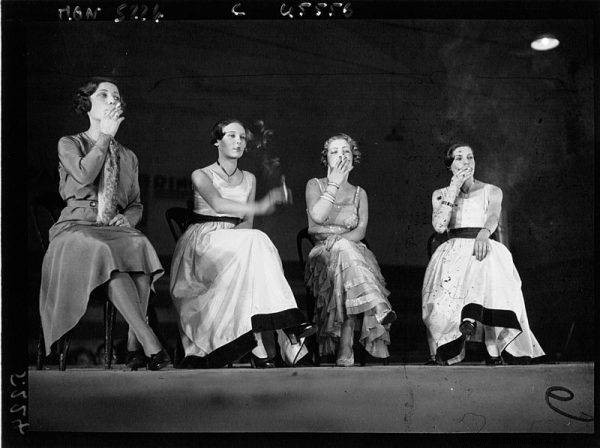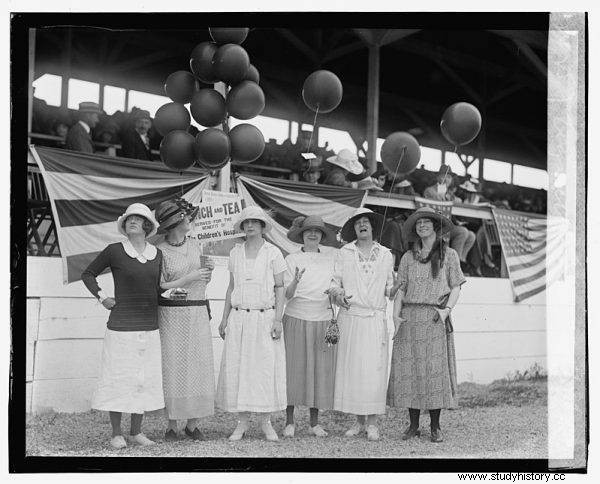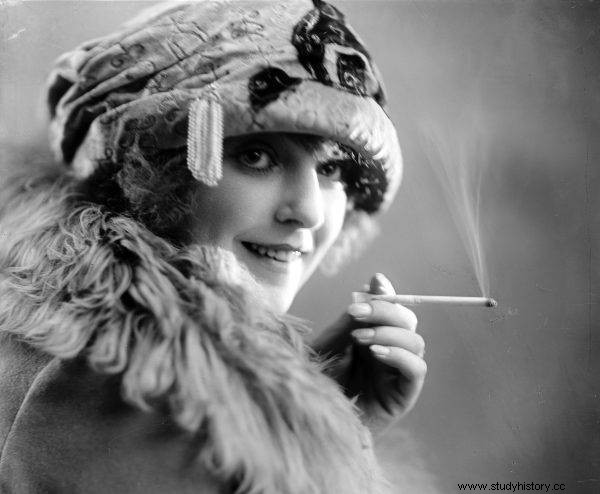Concern or sheer sexism? In 1908, in the United States, women were banned from smoking in public places. Literally one person was punished for breaking the oppressive law ...
According to some politicians, the 20th-century United States faced a real threat. On the threshold of the new century, mass production of cigarettes began. This in turn made the popularity of smoking tobacco products grow exponentially. However, the concern for the health of the public was not the problem at the time . More important turned out to be concerns about… upsetting the morals of women .
Is smoking allowed here?
Let's move to the streets of New York for a moment, over 100 years ago. The American Tobacco Company - the largest cigarette producer in history - holds the American society in its grip. Machines constructed in 1881 by James Bonsack push the nicotine industry forward. Daily cigarette production reaches an sky-high at the time:120,000 units . In the twentieth century, America is in a real boom smoking.

At the beginning of the century, tobacco smoke can be inhaled without any major problems in the streets, in restaurants and hotels (illustrative photo).
There are practically no restrictions in this regard in New York. At the beginning of the century, tobacco smoke can be inhaled freely in the streets, in restaurants and hotels. The time of day and surroundings don't really matter. Well, unless we're talking about smokers. For while no one paid attention to men, a woman with a cigarette in her mouth could be a scandal . So strong that it was decided to ban women from smoking in public. How did this come about?
No escort, no move!
American law and customs of the beginning of the last century were ruthless to women. Citizens were not admitted to the ballot box until 1920. In the public sphere, ladies could not afford too much. They faced charges of questionable morality, which the gentlemen scrupulously guarded. In practice, this meant, for example, ... no possibility of lonely walks . A woman who decided to go out alone has often encountered suspicions of prostitution . Single ladies might even have problems with entering restaurants or hotels. Especially in the late evening hours. What does this have to do with cigarettes? Smokers were particularly vulnerable to criticism from conservatives. They considered them extremely promiscuous.

In the public sphere, ladies could not afford too much. They faced charges of questionable morality, which the gentlemen scrupulously guarded.
Does this mean that Americans did not smoke? Not at all. Cigarettes have become a symbol of liberation and rebellion. Especially when they turned out to be more accessible. They quickly penetrated into public space and pop culture. And women eagerly reached for cigarettes. So willingly, that in 1907 the New York restaurant, Café Martin, announced a few days before the new year that it would not be paying attention to smoking customers. More followed soon after. As you can imagine, some people did not like such progressiveness.
"I've never seen a woman smoke"
Timothy Sullivan - the then moralist and one of the politicians in charge of Manhattan in New York - reacted swiftly. As reported in the New York Times on January 21, 1908, smoking in public by women was banned. Sullivan, when presenting the draft of his ordinance, allegedly said that he had never seen a woman with a cigarette in a restaurant . Surprising. And unlikely, considering the close cooperation with the American activist and politician Frances Perkins. The man himself was also a supporter of equal electoral rights and reformation of workers' rights so that they would become more favorable to women. The law introduced by him seems all the more surprising.
The new rule hit bars, hotels and restaurants in the first place. According to the ordinance, owners of any public premises were forbidden to allow customers to smoke. Sullivan believed that such a regulation was necessary - "even if it slightly infringes ... women's rights." So companies might have had a problem if they had not complied with the new rules. What about the smokers themselves?
Victim of oppressive law
The Sullivan ordinance of 1908 did not last long. Nor did it take a greater harvest. There is one woman who was to be punished for breaking a rule.

The Sullivan ordinance of 1908 did not last long. It did not take much of a harvest either.
The first and probably only victim of the strange law was Katie Mulcahey . The officer drew her attention the day after the enactment of the regulation, and then issued a fine of $ 5 . Today that would be the equivalent of about $ 144. The woman refused to accept the punishment. She stated that she had never heard of a similar recipe. She was placed in custody and released a day later. The court finally canceled the mandate.
The then mayor of New York did not like the new law. In 1908, this function was held by George Brinton McClellan, who later became Congressman of the United States. Withdrew the Sullivan ordinance less than two weeks after its introduction . And similar regulations did not appear in the city anymore.
